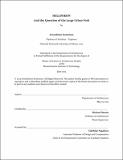| dc.contributor.advisor | Michael Dennis. | en_US |
| dc.contributor.author | Komninos, Aristodimos | en_US |
| dc.contributor.other | Massachusetts Institute of Technology. Department of Architecture. | en_US |
| dc.coverage.spatial | e-gr--- | en_US |
| dc.date.accessioned | 2013-10-24T17:40:59Z | |
| dc.date.available | 2013-10-24T17:40:59Z | |
| dc.date.copyright | 2013 | en_US |
| dc.date.issued | 2013 | en_US |
| dc.identifier.uri | http://hdl.handle.net/1721.1/81662 | |
| dc.description | Thesis (S.M.)--Massachusetts Institute of Technology, Dept. of Architecture, 2013. | en_US |
| dc.description | Cataloged from PDF version of thesis. | en_US |
| dc.description | Includes bibliographical references (p. 156-160). | en_US |
| dc.description.abstract | The intention behind this thesis is to examine how the latest socio-economic crisis, in Greece, Europe and the World affects our cities. This thesis is an attempt to invent strategies for the declining city of Athens and trace the opportunities offered by the Athenian landscape and the recently ceased airport of Hellinikon. Twelve years after the cease of its operation, Hellinikon remains the largest abandoned urban void in the fabric of Athens. The public demand for a Metropolitan Park and all privatization attempts have not yet been fruitful. In a critical time of economic recession and social segregation, the question of the large urban void emerges and traditional urban redevelopment practices are questioned. This thesis argues that the answer to the question of the large urban void lies next to grassroots initiatives currently active within Hellinikon that creatively exploit the public land. With this as a starting point, Hellinikon could become a territory entirely occupied by social forces that denounce economic growth per se, and are willing to build an autonomous community relying on its own resources and regulations. Through the shift from spontaneous and individual activities to a more holistic self-instituted narrative for the Hellinikon area, a new urban vision emerges: 'the Collective Superstructure'. This thesis states that the use of prime urban land as an investment to generate profit and fairly redistribute it to the people has failed us and can no longer constitute our primary objective. The post-crisis era should signify a holistic turn on how we perceive urban space and spatial justice. | en_US |
| dc.description.statementofresponsibility | by Aristodimos Komninos. | en_US |
| dc.format.extent | 160 p. | en_US |
| dc.language.iso | eng | en_US |
| dc.publisher | Massachusetts Institute of Technology | en_US |
| dc.rights | M.I.T. theses are protected by
copyright. They may be viewed from this source for any purpose, but
reproduction or distribution in any format is prohibited without written
permission. See provided URL for inquiries about permission. | en_US |
| dc.rights.uri | http://dspace.mit.edu/handle/1721.1/7582 | en_US |
| dc.subject | Architecture. | en_US |
| dc.title | Hellinikon and the question of the large urban void | en_US |
| dc.type | Thesis | en_US |
| dc.description.degree | S.M. | en_US |
| dc.contributor.department | Massachusetts Institute of Technology. Department of Architecture | |
| dc.identifier.oclc | 859811952 | en_US |
